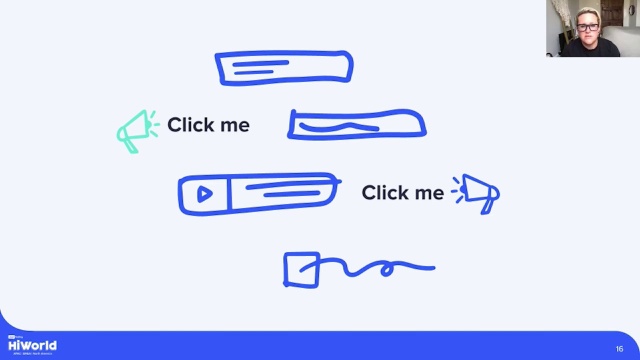
A comprehensive overview of customer loyalty programs

Remember the punch cards at the local frozen yogurt stand? Ten visits and ten little punches to the beat-up business card in your wallet would garner a free cone. In this digital age, the punch card has become stars added to your record in a custom app for each coffee or ice cream shop you frequent. Customer loyalty programs like this are a crucial part of the business strategy. These programs aim to retain customers, increase repeat business, encourage referrals, and gather data to understand customer preferences better.
Implementing an effective loyalty program takes careful planning, integration with existing systems, and optimization based on metrics. All this effort pays dividends in the form of higher customer lifetime value.
What are customer loyalty programs?
A customer loyalty program is a structured initiative that rewards customers for making regular purchases or engaging in desirable actions. They provide perks like points, discounts, free products, early access to sales, free shipping, or cash back. Customers accumulate benefits as they spend more money or actively participate with the brand over time.
The incentives provided by loyalty programs aim to increase customer retention, share of wallet (SOW), recency of spend, average order value, and brand loyalty. Businesses want to create an emotional connection between customers and their brand that translates to a measurable increase in sales and profitability. Customer loyalty programs encourage customers to make repeat purchases rather than one-off transactions. Why visit a more convenient froyo shop when you can go a little further and earn more consistent points toward a free cone? Humans love rewards, and customer loyalty programs gamify the shopping experience.
Benefits of a customer loyalty program
The primary objectives of customer loyalty programs are to retain customers longer and increase how much they spend. Here are a few key benefits:
- Increased customer retention and lifetime value: Rewards incentivize customers to return more frequently instead of taking their business elsewhere. Businesses retain loyal customers longer, increasing customer lifetime value (CLV).
- Reduced customer churn: Loyalty programs aim to reduce customer churn rate (CRR) by encouraging repeat purchases and improving the customer experience (CX). Offering exclusive rewards and perks increases customer satisfaction, making them less likely to switch to competitor brands.
- More referrals and word-of-mouth marketing: Many loyalty programs incentivize members to refer their friends and family. Referral programs harness the power of word-of-mouth marketing, which remains one of the most effective forms of promotion. When loyal customers are enthusiastic advocates for the brand, they help recruit new customers at virtually no cost.
- Richer customer insights and data: To redeem rewards or track status tiers, customers often need to share contact information and personal details with loyalty programs. Businesses capture behavioral data over time as members interact with the loyalty program. Analyzing activity helps identify customer preferences to tailor marketing outreach and offerings.
- Improved brand perception and affinity: Special status, rewards, and surprise upgrades make customers feel uniquely valued by brands with loyalty programs. Customers perceive these brands as better understanding and catering to their needs and preferences than competitors without loyalty programs. This emotional connection drives brand affinity and satisfaction while discouraging switching brands.
Types of customer loyalty programs
Businesses can choose from various customer loyalty program structures and incentives to align with their business model and customer base. Testing different program variants with user research helps identify the most appealing and effective options before rolling out incentives organization-wide.
Points-based programs
In points-based loyalty programs, customers can earn points for every dollar spent or certain desirable actions like writing reviews, checking in on social media, completing a purchase, or referring friends. After accumulating a set threshold of points, members can redeem accrued points for rewards like discounts, free products, or early access to sales.
For example, a clothing boutique might provide one point for every $2 spent. Once customers earn 100 points after $200 of purchases, they can redeem them for a $20 discount code. Also, the brand can reward non-expiring points so long as members remain active by making one purchase every set period.
To test which point accrual rates and redemption thresholds optimize engagement, brands can survey target users or even launch A/B tests with small member segments. UserTesting helps gather feedback on the perceived value of potential rewards in points catalogs before finalizing options.
Tier-based programs
In tier-based programs, members unlock elevated status when reaching preset thresholds for purchases or aggregate points earned over time. Higher tiers grant exclusive perks like free expedited shipping, steeper discounts, early access to sales, or free companion tickets. Customers unlock the next status level by continuing to actively engage with the brand and loyalty program over many months or years.
For example, a specialty grocery chain might offer a Gold tier for free after six purchases in three months, while Diamond status requires over $5,000 total spend. Diamond members can skip lines with self-checkout and enjoy 5% off all store brands. Surveying user reactions to proposed requirements for each tier prevents setting the bar too high or low.
Luxury retailers often have invitation-only tiers for their highest spenders. Fashion brands might even fly out top customers for runway previews and exclusive access to new collections. Conducting user interviews with UserTesting helps ensure that these lavish perks match the preferences of VIP customers instead of generating no interest.
Spend-based Programs
Rather than tracking points, some programs simply reward customers when they cross preset spending thresholds. For example, after a customer spends $500 total, a customer might get a gift card or unique discount code. Vendors can set different reward benchmarks, gradually offering additional perks for higher-spending customers in bands like $500, $2000, and over $5000 in lifetime spending.
Transactional businesses like restaurants thrive on frequent visits as opposed to high tickets. Spending thresholds for each tier should align with typical spending patterns in the industry. Defining the tiers and benefits for a coffee shop rewards program requires different user input than a fine jewelry brand. Leverage UserTesting to suggest the best tiers and benefits based on your customers and target audiences.
Cashback and discount programs
These simple programs provide discount codes or cashback rewards after purchases. The cashback might be a small 2-10% percentage on every order or specific cash amounts for the purchased items.
Cashback programs aim to drive incremental sales from occasional shoppers rather than encourage loyalty in the long term. But with tiered benefits, cash back on all purchases can engage frequent customers. Brands must conduct surveys and user research, using a solution like UserTesting or other software platforms, to determine whether across-the-board discounts or category-specific bonuses win bigger budgets.
Exclusive access programs
Luxury brands offer exclusive products and experiences to loyalty program VIPs to cultivate exceptional brand affinity. Special access benefits range from private trunk shows to early previews for new fashion collections or limited editions. Earning special status and treatment from esteemed labels activates the innate desire for social status and exclusivity.
However, testing exclusive experiential perks on select user groups first prevents assumptions about assumed VIP preferences. Just because a creative director envisions an over-the-top gala doesn't guarantee that the lavish event will impress the target customers. User research can help determine if an intimate dinner with featured designers better suits top-tier member preferences.
Referral programs
Referral programs reward existing customers for convincing new ones to make a first purchase. It earns points, account credits, or free products for the advocate and signup perks for the new customer. Referrals personalize word-of-mouth marketing, adding peer influence and credibility to attract higher-quality customers compared to strangers exposed to ads.
But poor program design can backfire, annoying contacts without driving conversions, so testing via UserTesting provides guidance.
- What mix of outreach and incentives optimally motivates sharing without seeming pushy?
- Do referral signing bonuses need to be higher to inspire advocacy?
Research with target users determines winning program tactics.
Gamification programs
Gamification programs incorporate game elements into loyalty programs by awarding badges, raising status levels, or unlocking new rewards. Like mobile games, members complete mission-driven challenges like referring friends, posting social content, or hitting new spending milestones to gain badges and virtual rewards.
Seeing progress bars tick higher and earning new badges and upgrades makes the loyalty program feel like a game instead of just transactions. For example, unlocking 'Epic Member' status might require ten referrals, over $5000 in lifetime spending, and five social posts yearly. The variety of goals and surprise 'reward reveals' maintain engagement long-term.
Testing game mechanics with target users ensures the right balance between exciting and achievable. Making top-tier goals seem out of reach will just frustrate members. Conducting UserTesting surveys and interviews can provide guidance to make gamified programs tempting.
Community programs
Rather than simply tracking individual purchases across disconnected customers, community programs foster connections between loyal customers themselves. Community members might have unique names like 'Star Partners,' private online forums to share experiences, or opportunities for formal introductions and networking at member events.
Developing these micro-communities centered around brands strengthens bonds beyond just transactions by tapping into humans' innate need for community and shared identity. Friendships form as members interact during meetup events, chat in forums, or collaborate on volunteer projects organized by brands, especially for top-tier loyalty members.
However, community building only succeeds if interactions match members' interests and values. Research via UserTesting provides brands with priceless input to properly customize forums, in-person events, and cause-based initiatives to community priorities.
Subscription programs
Subscription-based customer loyalty programs, or premium or paid loyalty programs, require customers to subscribe and pay a fee upfront for a product or service in exchange for exclusive rewards and benefits. Customers can receive exclusive experiences, instant discounts, first access to products and events, free shipping, and more. Examples of companies offering subscription loyalty programs include Amazon Prime, Taco Bell, and Pret's Coffee subscription.
Testing via UserTesting determines which perks, like free shipping or early previews of new collections, make the most significant impact on opt-in rates and subscription renewal confidence.
Launching a customer loyalty program
Launching a new customer loyalty program takes strategic planning followed by continual optimization. Critical steps for creating a successful loyalty program include:
Defining goals and key performance indicators
Start by identifying the target audience, their preferences, and overall program objectives. Common goals are increasing customer lifetime value, order frequency, average order size, and referral rates. With goals outlined, identify key performance indicators and benchmarks to track progress.
Choosing the right loyalty program type
The loyalty program type should appeal to customers and support overarching goals. Consider tiered programs for luxury goods or points accrual for airlines. Spend-based programs suit retailers with average transactions under $200.
Determining the reward structure
The incentives and requirements for each tier must create a sense of progression and accomplishment. Make lower levels easy to attain, but use exclusive rewards to make prestigious tiers more valuable. Balance exciting rewards with realistic requirements tailored to purchase frequency within the industry.
Promoting the loyalty program
Your loyalty program is only beneficial if people use it. Launch promotions highlight value propositions for initial enrollment and get customers to sign up. Promote sign-on perks like discounts or free products when visitors convert to loyalty program members. Continue reminding customers about current reward status and redemption options through targeted email campaigns, website banners, and notifications at checkout.
Integrating related technology
Loyalty programs rely on CRM software, automated email systems, and analytics dashboards. Ensure the loyalty program integrates smoothly across relevant platforms like your customer database, inventory system, online store, and payment processor.
Ongoing testing of promotional messaging and reward structures identifies the most enticing features and opportunities for improvement. UserTesting's platform allows businesses to solicit customer feedback on every aspect of proposed loyalty programs before launch and continuously after that. Through first-party data gathering, businesses can optimize their programs faster using insights directly from their target audience.
Here’s what a large car rental club company in Europe learned when they tested their version of a perfect subscription club with very few sign-ups.

Tips for successful customer loyalty programs
While program features vary across industries, some universal best practices boost customer enthusiasm and return on investment:
- Incentivize initial signups: Attracting members during the launch phase remains critical for loyalty programs just starting. Special deals, discounts, and giveaways should appeal to new converts.
- Solicit customer feedback: Surveys identify frustrations and pain points before they drive defection. UserTesting allows businesses to quickly gather customer perspectives on proposed changes to program interfaces, point systems, redemption catalogs, and more.
- Engage across all channels: Meet modern consumers where they like to interact, whether on mobile apps, online customer portals, or in stores. Make it convenient to earn rewards, check point balances, and claim rewards across channels.
- Keep it simple: Complex point systems and reward catalogs overwhelm casual members. Tier structures with clear benefits, intuitive point values, and exciting yet attainable redemptions encourage ongoing participation.
- Personalize when possible: Customers feel appreciated as individuals when businesses personalize promotions based on purchase history and demonstrated affinities. Matching program communication to personal interests signals a valuable relationship.
- Provide exceptional customer service: Loyal customers expect exemplary service in exchange for their continued business. That means fast responses, flexible policies, and treating VIPs like royalty. Going the extra mile pays off in member retention.
- Hold customer appreciation events: Pop-up events, early sales previews, and member appreciation nights make loyalty programs more experiential. Moments of delight beyond discounts alone strengthen emotional connections to brands long-term.
- Facilitate social sharing: Integrating shareable content about new point benchmarks and redemptions gets members to promote loyalty programs for the business. Social posts spread awareness while validating wise purchase choices among peers.
- Continuously optimize: Evolving consumer expectations means loyalty programs must reassess features and incentives regularly to remain competitive. Instead of guesswork, savvy brands rely on usability testing, A/B tests, and other CX research to iterate based on user feedback.
Common loyalty program pitfalls to avoid
A loyalty program can lead to customer disengagement and failure if not carefully implemented. Common missteps often involve:
- Forcing customers into a one-size-fits-all program: Programs feel corporate and impersonal if members have no input in customizing the experience to suit individual needs and preferences. Letting members choose bonus point categories makes accrual more exciting.
- Changing program terms abruptly with no transition: Nothing frustrates loyal members more than suddenly increasing requirements for reward tiers they have already achieved—honor status for those who qualify under old rules while incrementally introducing updated criteria.
- Failing to explain changes or notify members: Poor communication and transparency inevitably trigger a backlash. Clearly announce upcoming changes that impact point accrual, redemptions, or status longevity with plenty of warning. Keep members informed.
- Prioritizing conquest marketing over loyalty rewards: Redirecting too many marketing resources and incentives toward new customers instead of thanking loyal ones causes resentment. Make existing members feel more valued than newcomers.
- Letting technology issues disrupt the member experience: When earned points disappear, tier status gets mistakenly revoked, or glitchy interfaces prevent reward redemptions, broken technology infuriates once-loyal fans. Rigorously test across platforms to avoid tech hiccups.
- Not optimizing for holistic customer experiences: Loyalty programs often focus narrowly on point systems and rewards catalogs. However, the surrounding customer experience journey dramatically impacts engagement and satisfaction. Even the most generous rewards lose their appeal if outdated interfaces or confusing workflows frustrate customers.
The most successful loyalty programs align business KPIs with experiential joy during key moments of the customer journey. A research platform like UserTesting provides the insights to balance metrics with user sentiment.
Unlock the potential of your customer loyalty programs with UserTesting
Well-designed loyalty programs retain customers longer by incentivizing repeat purchases and referrals. But true loyalty requires continually adapting to meet rising consumer expectations around value, convenience, and personalization.
UserTesting provides direct customer insights to optimize loyalty features and experiences. Interactive prototypes test new concepts with target users before launch. Ongoing usability testing smooths friction across enrollment, activity tracking, and redemptions.
Loyalty programs thrive through user-centered iteration. UserTesting offers feedback mechanisms to avoid pitfalls and maximize member enthusiasm. The right incentives drive engagement only when grounded in user perspectives.
Start building loyalty programs today that customers will enthusiastically participate in for years to come. Book an expert consultation.
Frequently asked questions
What are some examples of successful customer loyalty programs?
Popular hospitality programs like Marriott Bonvoy and Hilton Honors drive bookings by letting travelers earn free nights. Starbucks Rewards provides free food and drinks for frequent visits. Sephora's Beauty Insider unlocks gifts, early sales access, and birthday surprises to excite members to new launches. Amazon Prime's bundling of free shipping, streaming, and special deals attracts shoppers continuously.
How can UserTesting help businesses improve their customer loyalty programs?
UserTesting allows businesses to optimize loyalty program features and interfaces through direct customer feedback. Surveys give insight into the perceived value of points systems, status tiers, and reward options before launch. Ongoing usability tests will then refine experiences around enrollment, activity tracking, and redemptions to smooth friction points. Optimizing through user research future-proofs loyalty programs as consumer preferences evolve.
In this Article

What's next
What's next


